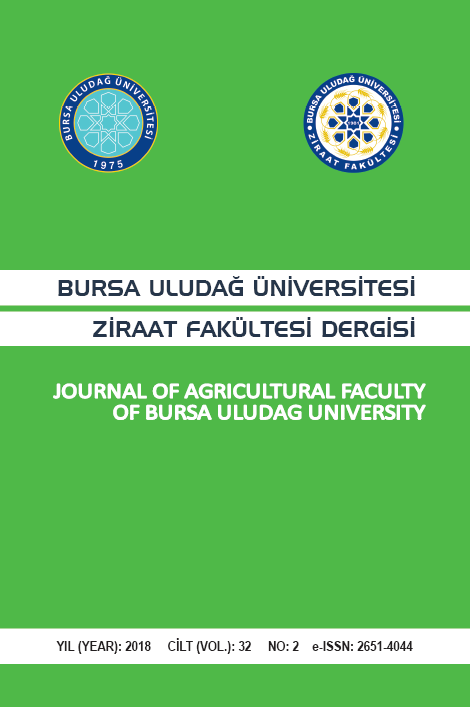Introduction of Steinernema Carpocapsae Weiser, 1955 (Rhabditida: Steinernematidae) From Natural Population of White Grub, Polyphylla Olivieri (Coleoptera: Melolonthidae) From Iran
White grub, Polyphylla olivieri Cast. (Col., Melolonthidae) is major pest of the Iran. In a survey for collecting natural entomopathogenic nematodes associated with this melolonthid, two isolates of Steinernema spp. were collected as natural pathogens in larval populations of the white grub in the Tehran province of Iran. Morphological characters identified those as members of “carpocapsae “group. Morphological and molecular characters using ITS sequences as well cross hybridization tests confirmed those as S.carpocapsae.16S rRNA sequences and phenotypic characters of symbiotic bacteria were determined and used for identification. Phylogenetic analysis for studying relationship was performed. This is the first information about this pathogen of P.olivieri as well new information about symbiotic bacteriua associated with Iranian entomopathogenic nematodes
Keywords:
Entomopathogenic Nematodes, Steinernema carpocapsae, Xenorhabdus nematophila white grub, Polyphylla olivieri, Iran,
___
- Akhurst, R.J., 1980. Morphological and functional dimorphism in Xenorhabdus spp., bacteria symbiotically associated with the insect pathogenic nematodes Neoplectana and Heterorhabditis. Journal of General Microbiology, 121, 303–309.
- Adams, B. J. and Nguyen, K. B. 2002 Taxonomy and Systematics. In Gaugler, R (Ed.): Entomopathogenic Nematology., CABI Publishing, Wallingford,pp. 1-34.
- Chenna, R., Sugawara, H., Koike, T., Lopez, R., Gibson, T.J., Higgins, D.G., Thompson J.D. 2003. Multiple sequence alignment with the Clustal series of programs. Nucleic Acids Research, 31:3497–3500.
- De Grisse, A.T. (1969) Redescription ou modifications de quelques techniques utilisées dans l’étude de nématodes phytoparasitaires. Mededelingen Rijksfaculteit Landbouwwetenschappen Gent, 34, 315–359.
- Eivazian, K. N., Niknam, Gh., Griffin, C. T. and Moghaddam A. 2009. A survey of entomopathogenic nematodes of the families Steinernematidae and Heterorhabditidae (Nematoda:Rhabditida) in the north-west of Iran. Nematology., 11: 107-116.
- Grewal, P.S., Grewal, S.K., Malik, V. S., and Klein, M.G.2002. Differences in susceptibility of introduced and native white grub species to entomopathogenic nematodes from various geographic localities. Biological Control 24, 230.
- Hasegawa, M., Kishino, H. Yano, T. 1985. Dating of the human-ape splitting by a molecular clock of mitochondrial DNA. Journal of Molecular Evolution, 21:160–174.
- Kaya, H.K. & Stock, P. 1997. Techniques in insect nematology.In: Lawrence, A.L. (Ed.). Manual of techniques in insect pathology. San Diego, CA, USA, Academic Press, pp. 282-324.
- Kuwata, R., Shigematsu, M., Yoshiga, T., Yoshida, M. and Kondo, E.2006.Intraspecific variations and phylogenetic relationships of steinernematids isolated from Japan based on the sequences of the ITS region of the nuclear rRNA gene and the partial mitochondrial COI gene. Japanese Journal of Nematology, 36,11-21.
- Nguyen, K.B. & Adams, B.J. (2003) SEM and systematic studies of Steinernema abbasi Elawad et al., 1997 and S. riobrave Cabanillas et al., 1994 (Rhabditida: Steinernematidae). Zootaxa, 179, 1–10
- Nguyen, K.B. & Smart, G.C., Jr (1995) Morphometrics of infective juveniles of Steinernema spp. and Heterorhabditis bacteriophora (Nemata: Rhabditida). Journal of Nematology, 27, 206–212.
- Nguyen, K. B., Maruniak, J. and Adams, B. J. 2001. Diagnostic and phylogenetic utility of the rDNA internal transcribed spacer sequences of Steinernema. Journal of Nematology, 33, 73-82.
- Parvizi, R.(2001) Survey on pathogenicity of entomopathogenic nematodes, Steinernema sp. and Heterorhabditis bacteriophora infesting larval Polyphylla olivieri. Journal of Entomological Society of Iran, 21,63-72.
- Stock, S.P., Vandenberg,J, Glazer,I and Boemare,N. 2009.Insect Pathogens: Molecular Approaches and Techniques.CABI, 432 P.
- Spiridonov, S. E., Reid, A. P., Podrucka, K., Subbotin, S. A. and Moens, M. 2004.Phylogenetic relationships within the genus Steinernema (Nematoda: Rhabditida) as inferred from analyses of sequences of the ITS1-5.8S-ITS2 region of rDNA and morphological features. Nematology 6, 547-566.
- Seinhorst, J.W. (1959) A rapid method for the transfer of nematodes from fixative to anhydrous glycerin. Nematologica, 4, 67–69.
- Tamura K, Dudley J, Nei M & Kumar S (2007) MEGA4: Molecular Evolutionary Genetics Analysis (MEGA) software version 4.0. Molecular Biology and Evolution 24:1596- 1599. (Publication PDF at http://www.kumarlab.net/publications).
- Thompson, J. D., Gibson, T. J., Plewniak, F., Jeanmougin, F. and Higgins, D. G. 1997. The CLUSTAL X windows interface: flexible strategies for multiple sequence alignment aided by quality analysis tools. Nucleic Acids Research 25, 4876-4882.
- Vrain, T. C., Wakarchuk, D. A., Levesque, A. C. and Hamilton, R. I. 1992 intraspecific rDNA restriction fragment length polymorphisms in the Xiphinema americanum group. Fundmental and Applied Nematology, 15, 563-574.
- Yayın Aralığı: Yılda 2 Sayı
- Başlangıç: 1982
- Yayıncı: Bursa Uludağ Üniversitesi
